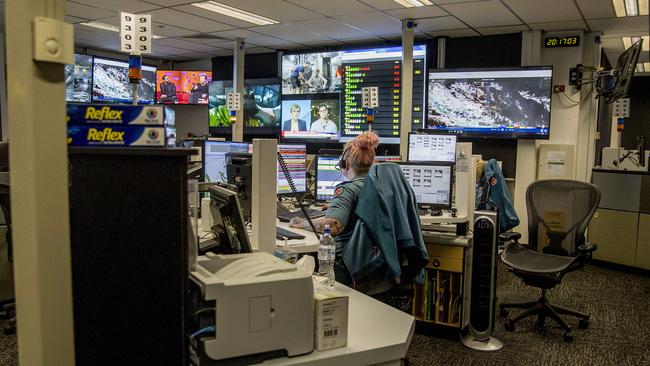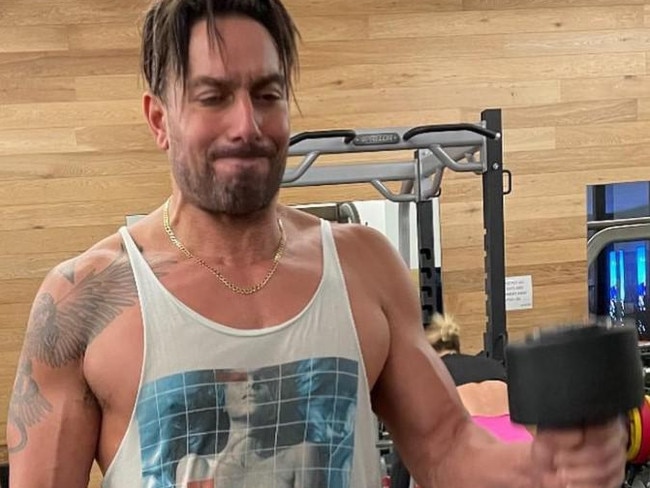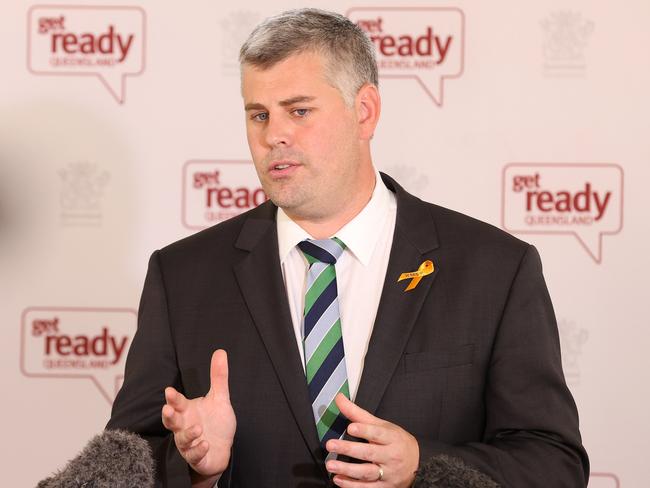OPINION: What our ambulance drivers on the Gold Coast have to experience is horrifying
Queensland Ambulance Service logs from the busy Southport Operations Centre paint a brutal picture of life for our hardworking ambos, writes Keith Woods.
Police & Courts
Don't miss out on the headlines from Police & Courts. Followed categories will be added to My News.
IT used to be said that the trouble with hospitals is they are full of sick people.
Medical staff on the Gold Coast probably wish it were that simple, because increasingly, it’s not people unlucky enough to fall unwell that are chewing up the time of highly trained nurses and paramedics.
Talk to any of them about their jobs and you’ll hear a lot about another kind of patient.
The kind whose troubles are largely self-inflicted. The kind whose troubles end up costing everyone else, but most especially our frontline workers.
A perusal of ambulance logs released to the LNP under Right to Information laws from a week at the busy Southport Operations Centre – which covers the Gold Coast, Metro South and West Moreton areas – paints a dark picture.

Many of us would have been relaxing on Sunday, April 25. Not the crews of the Queensland Ambulance Service.
They were sent to a car rollover just after 5pm.
A patient was said to be “trapped upside down”. The report lists the patient’s injuries, and one killer term, “intox” – telling us the driver was drunk.
Five hours later the logs detail how a crew was forced to deal with an “aggressive patient”. “Police required L&S (lights and sirens),” the report notes. “Domestic situation on scene”.
At midnight, ambulances were sent to a job involving “20 people fighting in street, believed three patients, baseball bat involved.”
The three injured people were taken to hospital. The report says they were “hit on head with blunt object”.
But this day was not the worst of it.
The logs also describe an incident on the following Friday, when a patient spat in the face of an ambulance officer. Police were dispatched to Robina Hospital to assist.
Two hours later, another officer was hit by a patient in the Logan area. Some Friday night.

It’s not uncommon. Across Queensland, hundreds of assaults take place against paramedics each year.
And then people wonder why it sometimes takes longer than they expect for ambulances to show up.
The documents also reveal the huge amount of overtime being done by ambulance staff. There are many examples. A crew member, due to finish at 11pm, sent to a Code 1 job at 11.58. “Cleared GCUH (Gold Coast University Hospital) at 01.15”, the documents state.
Or the crew, due to finish at 6pm, sent to a Code 1 at 5.39, and ending up being there longer than expected because of a “delay clearing due to non-compliant patient”.
These cases give but the tiniest insight into what ambulance and health staff are dealing with daily on the Gold Coast.

Another glimpse was provided in reports alleging an unvaccinated rideshare driver with Covid-19 being treated at Gold Coast University Hospital verbally abused nurses and tried to flee hospital quarantine.
A source told this newspaper he had been “abusing the nurses all night, calling them c***s”, and “saying he doesn’t really have Covid and that Covid isn’t real”.
Duran Raman’s case makes the headlines because he has Covid-19, but it is clear from speaking to health staff on the Gold Coast that this sort of thing is a regular occurrence.
Amid all the talk of overworked staff, bed shortages and ambulance ramping, there is concern our hospitals would be overwhelmed if there was finally to be a sustained outbreak of Covid-19 on the Gold Coast.
But that might not be such a concern if they were not so often already overwhelmed. By total idiots.
How overworked staff must wish that the only thing they had to worry about in our hospitals were the sick people.
Young, fearless and out of control: School age crims terrorising Coast
OCTOBER 19: THIS column has spent much of the past two weeks speaking to victims of a crime wave that is sweeping through every suburb on the Gold Coast.
All of them have had vehicles stolen. In every case, offenders had first broken into their homes to steal the keys, most usually late at night when the owner is asleep inside.
A number of things stand out.
The victims all look much the same. They are all decent, hardworking people. The sort of people we all have as friends.
The stolen vehicles, some of them highly expensive, were earned the hard way. The thefts lead not just to financial stress, but also to feelings of horror and fear, centred around the thought that someone potentially violent and unpredictable had been skulking around their house.

The perpetrators all look the same too. They range from thirteen to sixteen years old. And they act as if they haven’t a care in the world.
Brazen doesn’t even begin to describe these teenagers. They are clearly not worried about suffering consequences for their actions.
They publicly post photos and videos of themselves with stolen vehicles without taking even basic precautions to hide their identity.
They also freely communicate with victims and others about their crimes. Taxi driver sources have told this column that they have been called to jobs on the southern Gold Coast late at night to discover that the “customers” are young people clutching ill-gotten gains after breaking into homes. In such cases, they openly grumble to drivers about having to catch a cab, because they were unable to locate the car keys of their victims.
The fact that the driver is likely to report the incident to police doesn’t faze them.
As one would expect, such experiences horrify taxi drivers, who have become even more wary of where they go and who they pick up as a result.

How do we stop what appears to be a rapidly escalating cycle of youth crime?
It is hard to imagine a reform to the youth justice system that would knock these young people off their destructive path.
In any case, by the time they come before the courts, it’s already too late.
The only real hope lies in prevention, not a cure.
These thefts are happening every night because the offenders involved are finding rich pickings on the Gold Coast. If they weren’t, they would not keep coming back.
We need to make it harder for them to get their hands on vehicles.
One good way would be a greater police presence in the evenings. There are simply not enough officers to handle the growing workload.
Almost 1600 people signed a petition sponsored by Surfers Paradise MP John-Paul Langbroek in June calling on the state government to boost police numbers.
“Residents have raised concerns over car and property theft, forced entry into homes, people walking into backyards late at night and casing, destruction of property, hooning activities and so forth,” it read.
“Your petitioners, therefore, request the House to do all within its power to provide the Queensland Police Service on the Gold Coast with additional personnel and associated resources to make communities safer.”

In his response on July 15, Police Minister Mark Ryan said numbers had been increased, without specifying by how many.
“I am advised by the Queensland Police Service (QPS) that more police personnel and police resources have already been deployed to the Gold Coast Police District this year and more will be deployed in future years,” he said.
“The Government’s investment in the QPS means that an additional 2,025 police personnel will be deployed over five years with at least 150 police officers being deployed to the South Eastern Police Region, which includes the Gold Coast.”
Mr Langbroek told this column the response was “just a bunch of pollie speak” that left residents feeling “frustrated”.
The response also revealed that while police numbers are going up, it’s not by much.
The South Eastern Police Region includes the Logan and Gold Coast districts. Rough maths tell you that if the extra 150 officers is evenly split between both, this city gets 75 more police. Over five years. Implying an extra 15 police a year.
Is that enough to stem the tide?
Few of the victims of the latest crime wave would think so, not least because they see so many officers tied up at quarantine hotels and at the border.
For these victims, the only solution is to beef-up their own security. They talk about stronger doors and windows, and safes for their keys. Some have even grouped together to hire private security contractors.
If things keep on their current sorry path, that’s something we may all soon have to consider, lest this columnist spends many more weeks and months speaking to the victims of this type of crime.





